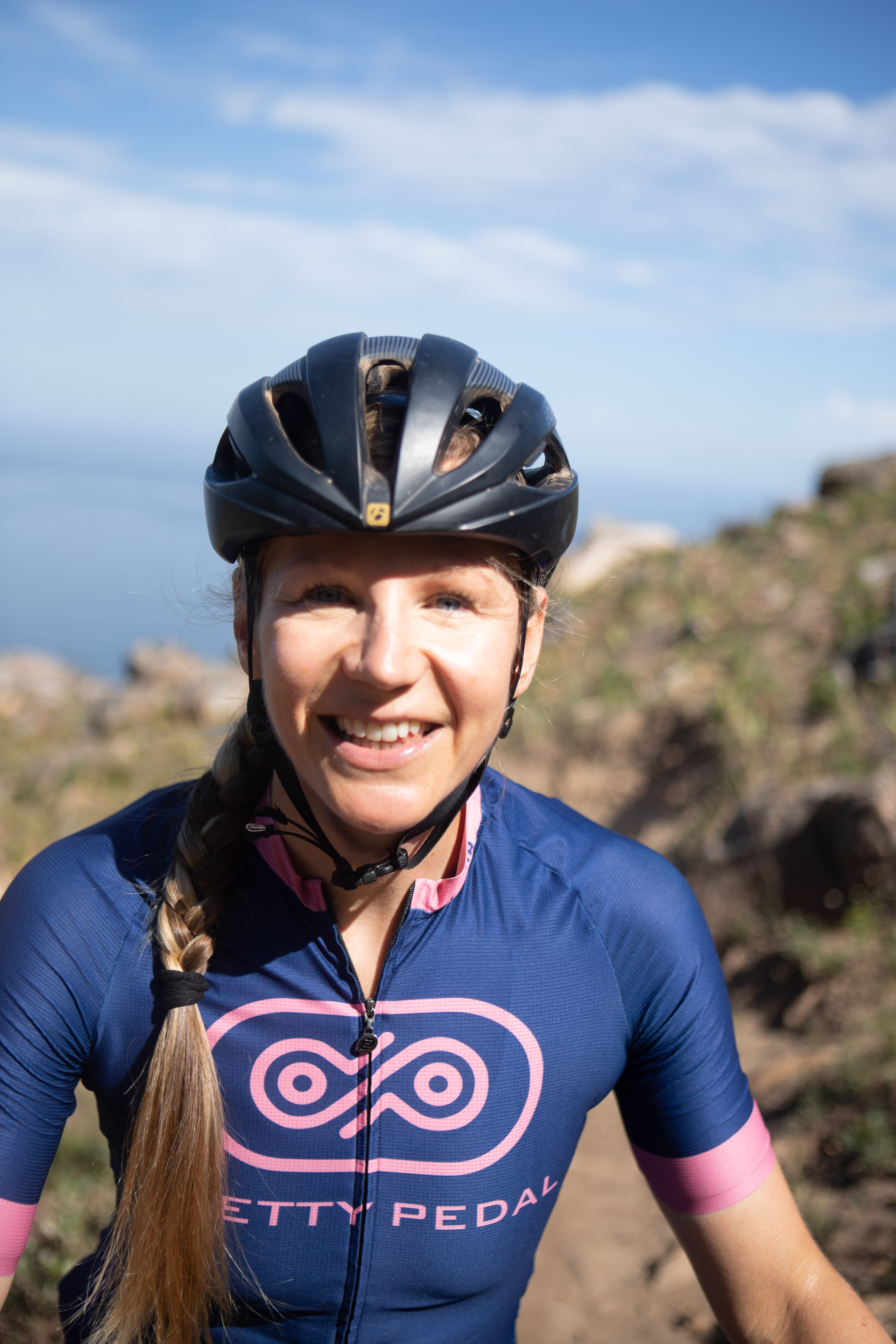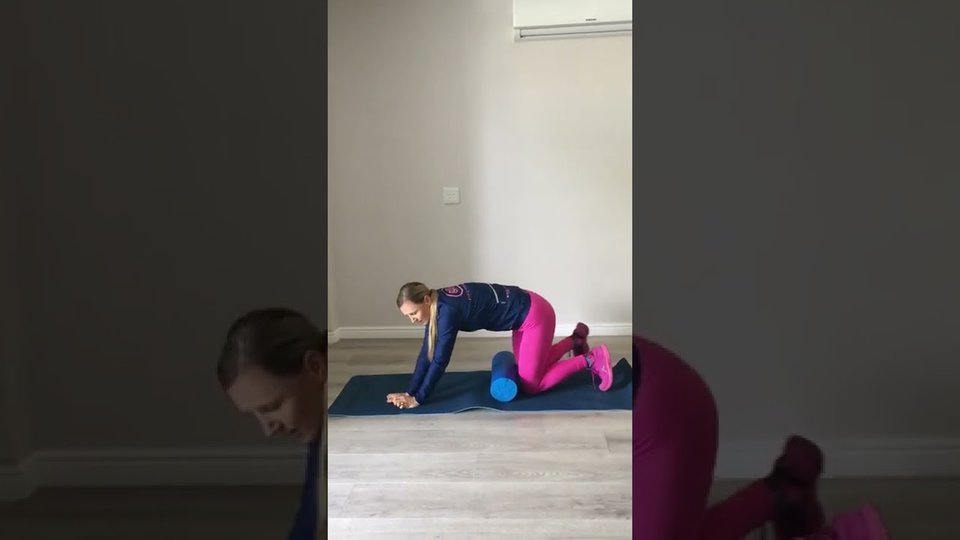TOP 10
RECOVERY TIPS
Words By: Kate Slegrova

KATE'S COLUMN
1. TAKE TIME TO COOL DOWN
Hands up who’s guilty of jumping straight off the bike after a tough race or bike ride? A cool-down may take extra time but ending each bike ride with at least 10 minutes of easy cycling helps the body return to its pre-exercise state. Spinning the legs gets blood flowing around the body and helps remove metabolic waste products from the muscles, aiding the recovery process.
2. ELEVATE YOUR LEGS
If you’ve just done a hard training ride, lying down with your legs against a wall can help drain fluids that may be pooling in the legs, reduce swelling and also gently stretch your hamstrings, all helping with recovery. If you’re feeling faint or dizzy, it will also get blood flow back to the brain. I recommend aiming to stay there for five minutes for every hour ridden.
3. HYDRATE WITH RECOVERY DRINKS
While most of us drink little and often on the bike, after a hard or long training session and in warmer weather, dehydration is likely. That makes it harder for your heart to pump blood and oxygen around your body, slowing the recovery process. When you get back from a shorter, easy ride drinking water should be enough but if it’s been a tough day in the saddle, you’ll want to replace some of the electrolytes – such as sodium – which you’ve lost too. My favorite is Revive. It has no sugar and natural flavor.
4. FUEL UP
Nutrition is a key weapon in your recovery arsenal. Taking on protein straight after a session will give you the best chance of repairing and rebuilding muscle.
After a long or tough session, having carbs to replace the energy lost during exercise will boost your glycogen stores, while protein will help repair muscles and muscle soreness.
I am a a big believer in wholesome food but I like to add pea and whey protein to get in extra protein as I’m not big into meat. I like to have fish though and occasional chicken. But everyone now and then I will have a steak for some red meat. Try to avoid too much fat after exercise as it slows down the transition of carbohydrates through the stomach, which isn’t really something we want at that point. The best time to start your refueling is within 30 minutes of exercise so if you can’t face a full meal grab something quick and easy like recovery shake or smoothie. I love overnight chia seeds, oats, and protein bowls.
5. FOAM ROLLING & MASSAGE
While it’d be great to schedule a sports massage each week, not all of us have the time or the money.
Luckily self-massage tools such as foam rollers, massage balls and sticks offer similar benefits, helping remove waste products, reduce inflammation and encourage blood flow to promote good recovery. It’s not very pleasant, it’s can be quite painful but apparently it’s great for you! I would do this after a hard ride or race.
6. COMPRESSION & ICE BATHS
While more evidence is needed to prove its efficacy, compression clothing is designed to increase blood flow and reduce swelling and post exercise muscle soreness and many cyclists are fans. Manufacturers recommend wearing compression clothing (like compression tights) for periods of two-to-four hours after exercise and its particularly useful after big races. Try to wear it for about a week after a race so that your legs don’t swell up, especially if you’re traveling.
Ice baths can be a great tool to speed up your recovery. It can decrease muscle soreness so it’s super beneficial in stage races. Try submerging your lower body for 1-2 mins. The experts say longer period than 5 mins doesn’t have more benefits.
7. MOBILITY WORK
Keeping muscles supple and in good condition with mobility work will reduce your chance of injury. It also allows your muscles to work to their full range of motion during exercise, which can improve your performance and prevent injuries.
In addition, it may also help relieve symptoms of muscle stiffness and soreness after exercise. Mobility is a really important part of my program. Before a bike ride or a strength session I like to warm up my muscles through the full range of movement.
8. ACTIVE RECOVERY
Rest and recovery usually means putting your feet up and doing very little. However, in certain circumstances, such as the days following a big race, you may find active recovery beneficial. Active recovery consists of doing some form of exercise, such as a very easy spin on the bike to get the blood moving.
Walking to and from work counts as well. Or playing with the kids. Recovery is just as much mental as physical, particularly if you’ve just competed in your goal race. So sometimes it’s better to sack off the bike and do something else you enjoy instead. So if you’re in doubt whether you’re ready for it, miss it out and take an extra day’s full rest instead.
9. SLEEP & REST
During deep sleep your body produces the human growth hormone, which stimulates muscle growth and repair. A lack of sleep can make you moody, unfocused, increases production of the stress hormone cortisol and ups your rate of perceived exertion – so training feels like much harder work. In short, if you want to recover and train at your best, you need some decent shut eye. I aim for 8 hours of sleep per night.
Taking a rest day is also important. I normally take one day a week as rest for my legs. I might still do some core and upper body exercises and stretch but I try to stay off the legs a bit. To get stronger you need to recover and rest.
10. LET YOUR MIND REST TOO
As well as giving your body time to rest and recover, you need to give your mind some downtime too, particularly if you’re trying to train alongside other demands such as work and family. Mental recovery is probably more important for me than physical recovery. If I haven’t recovered mentally it doesn’t matter what physical shape I’m in because I won’t be able to push myself to the limits.
After a big race such as Cape Epic I would recommend 2 weeks of the bike to recover properly. For amateur cyclists, after a race it’s a good time to catch up with friends, maybe try some other sports or exercise classes and just chill out so you can get back in the saddle, mentally and physically refreshed.

Kate Slegrova is a cycling and strength coach and, BICP certified MTB skills instructor. With 15 years training experience across the cycling disciplines. Her first love is mountain biking. Kate has competed in several MTB stage races including three Absa Cape Epics [with a top ten women’s team finish in 2022]. She is passionate about empowering people and specifically women. and started Pretty Pedal - and MTB and Road Cycling Club for women.
You can follow her and Pretty Pedal on Instagram @KateSlegrova or @PrettyPedal

